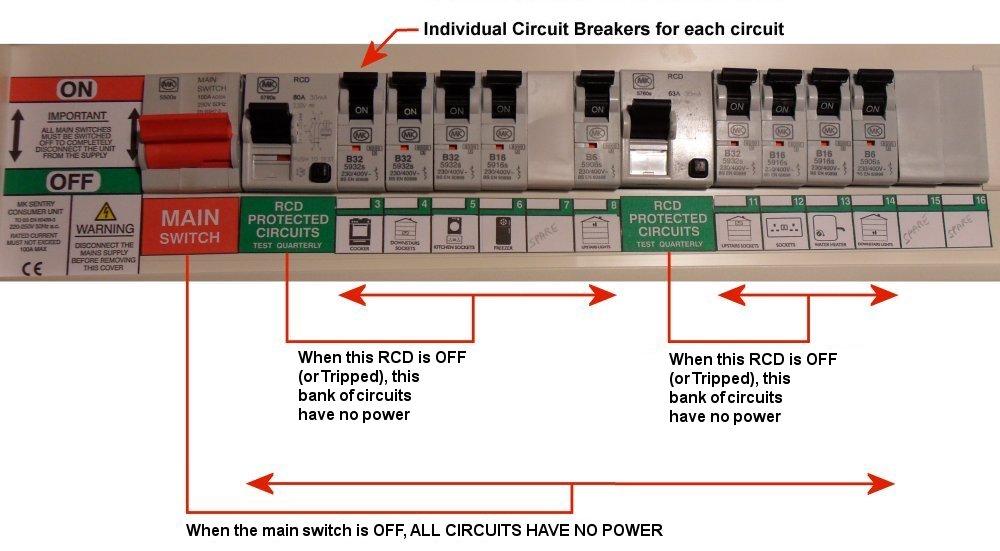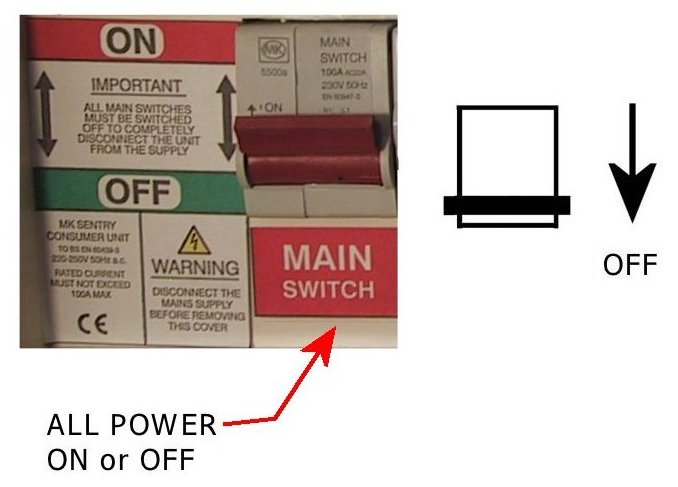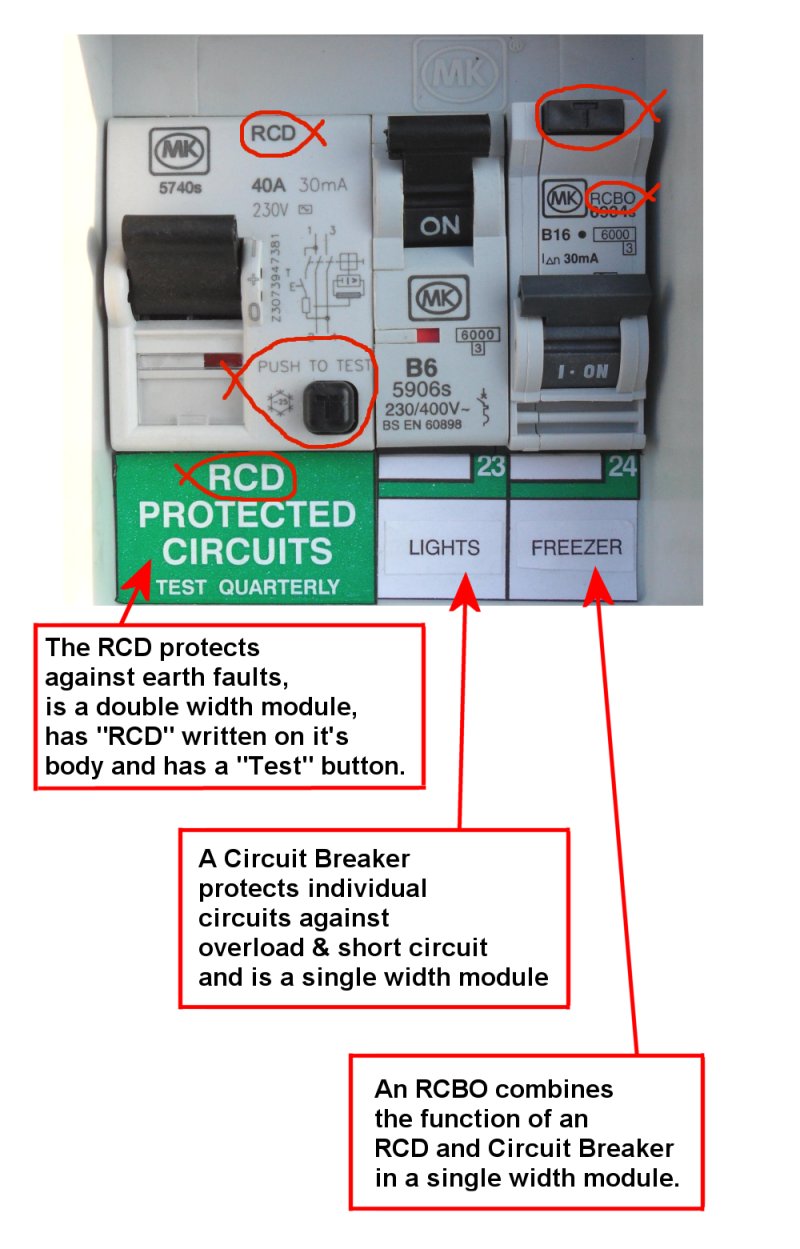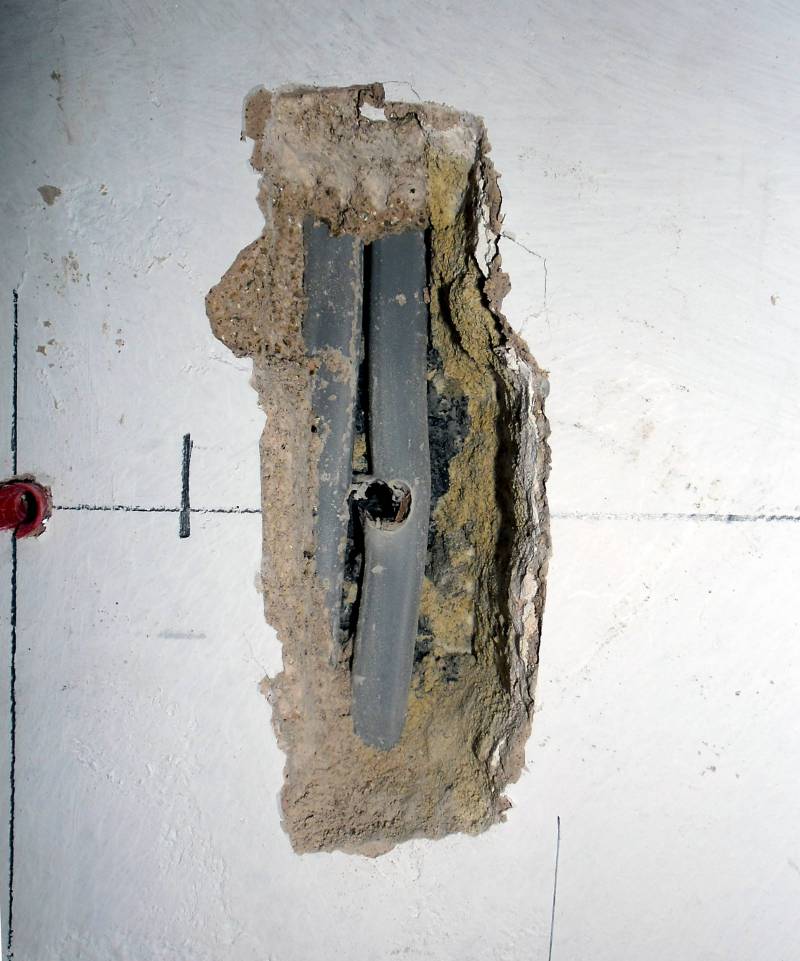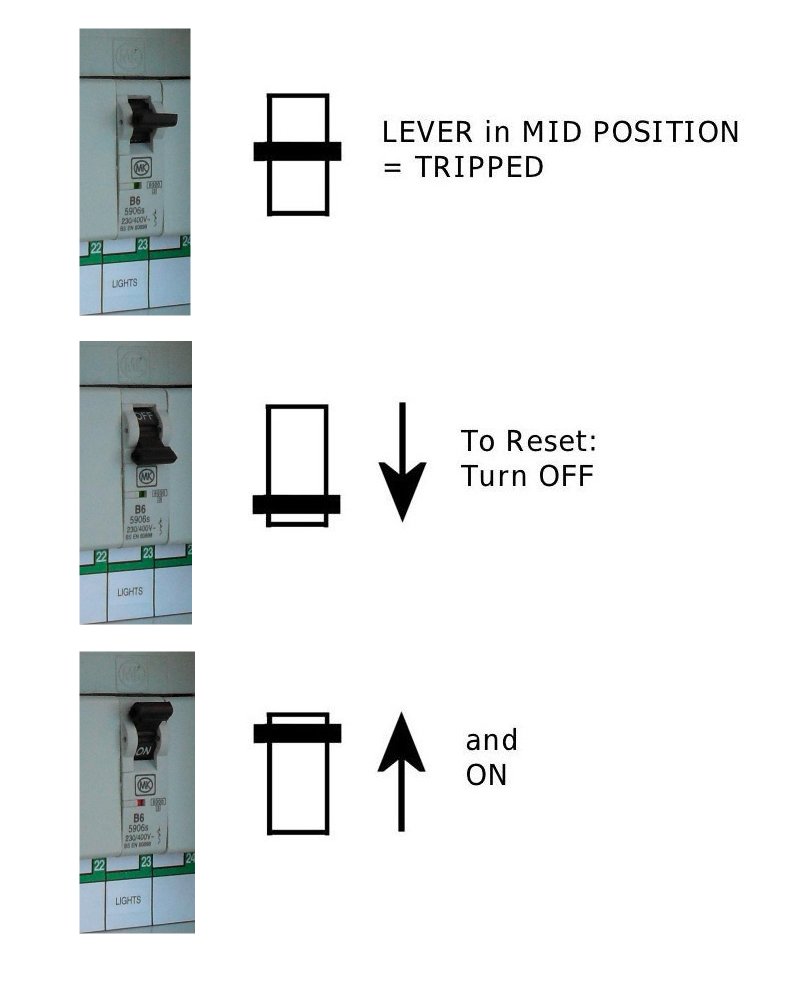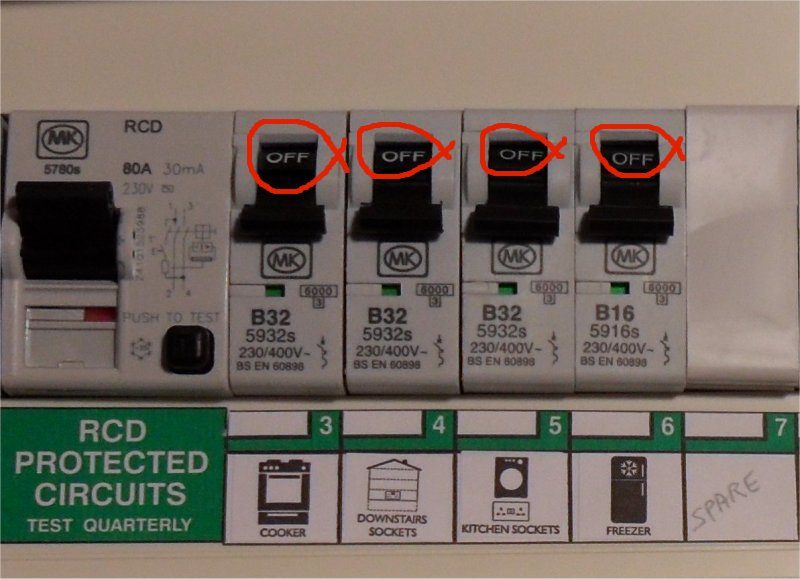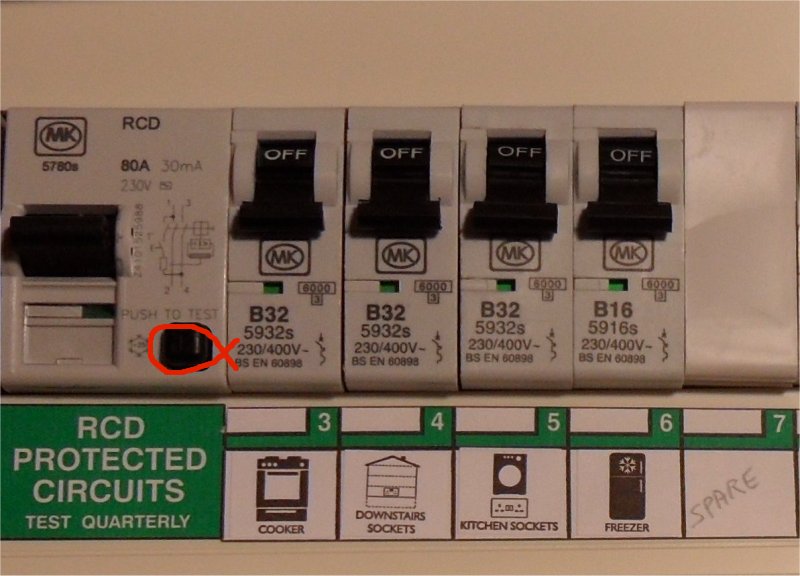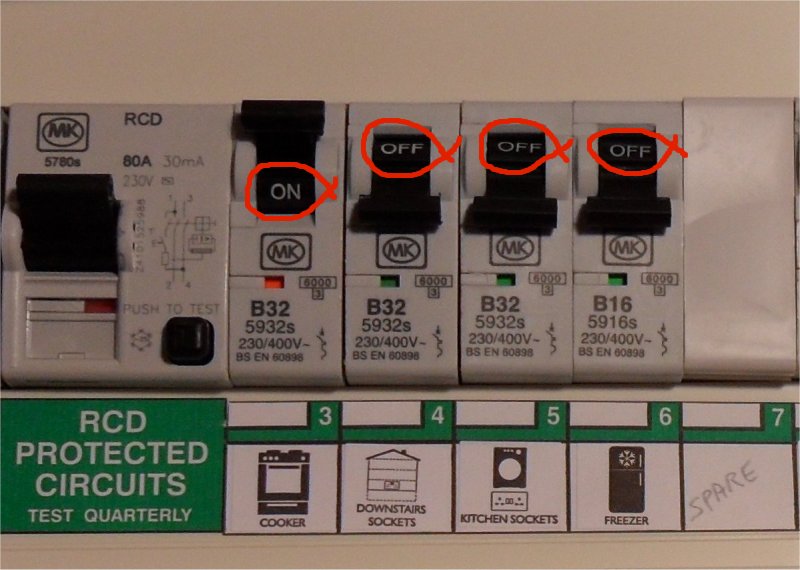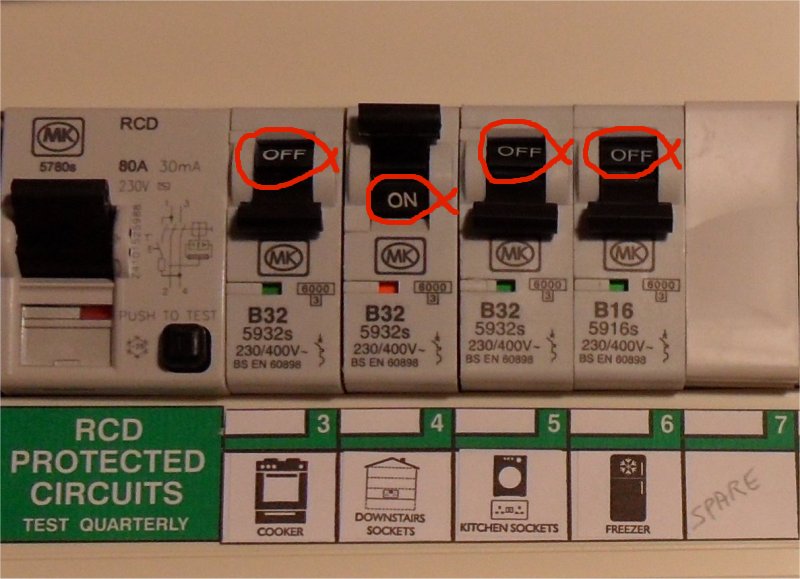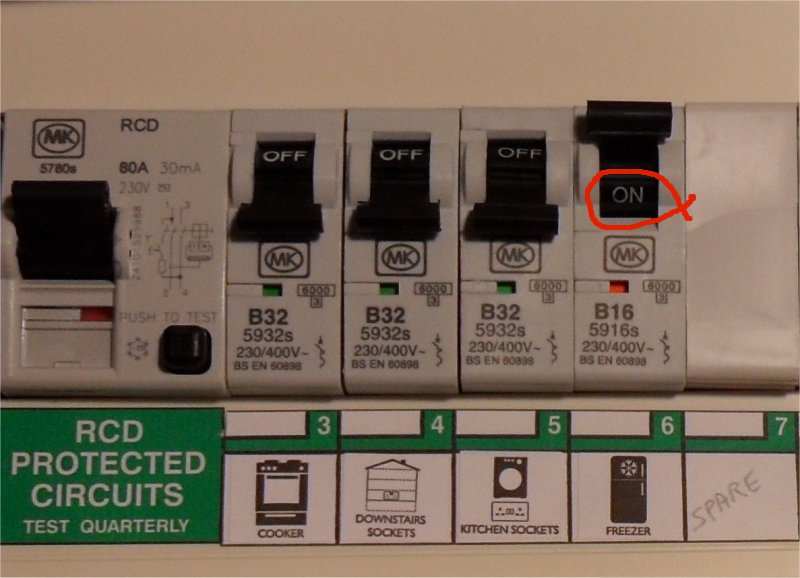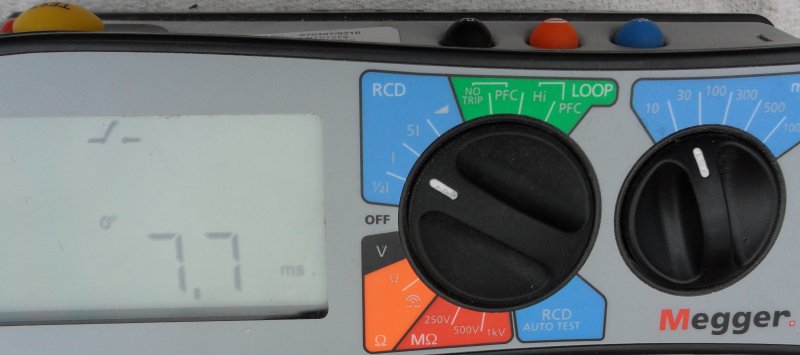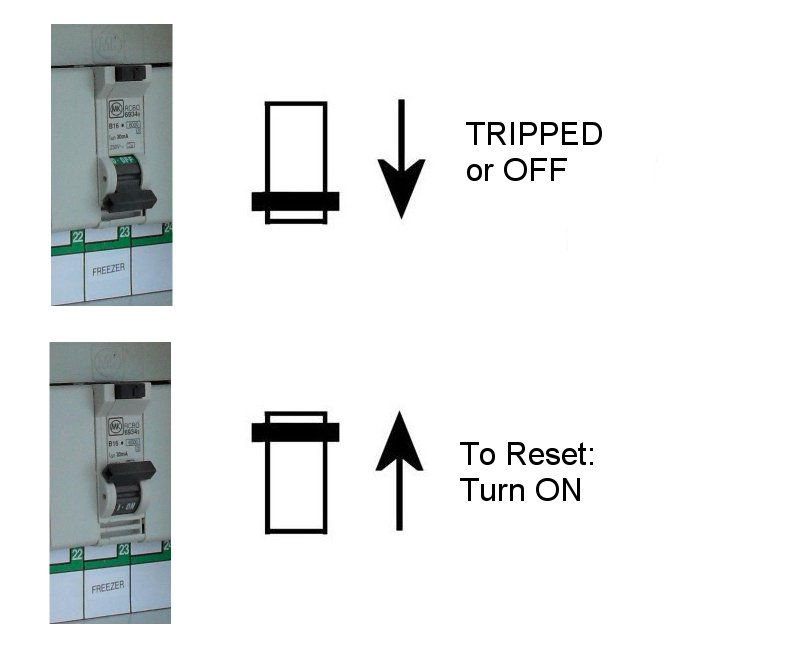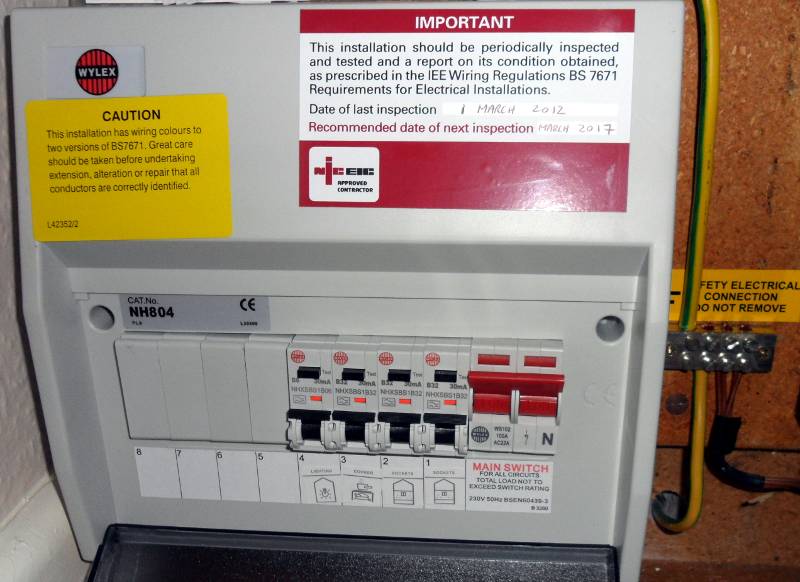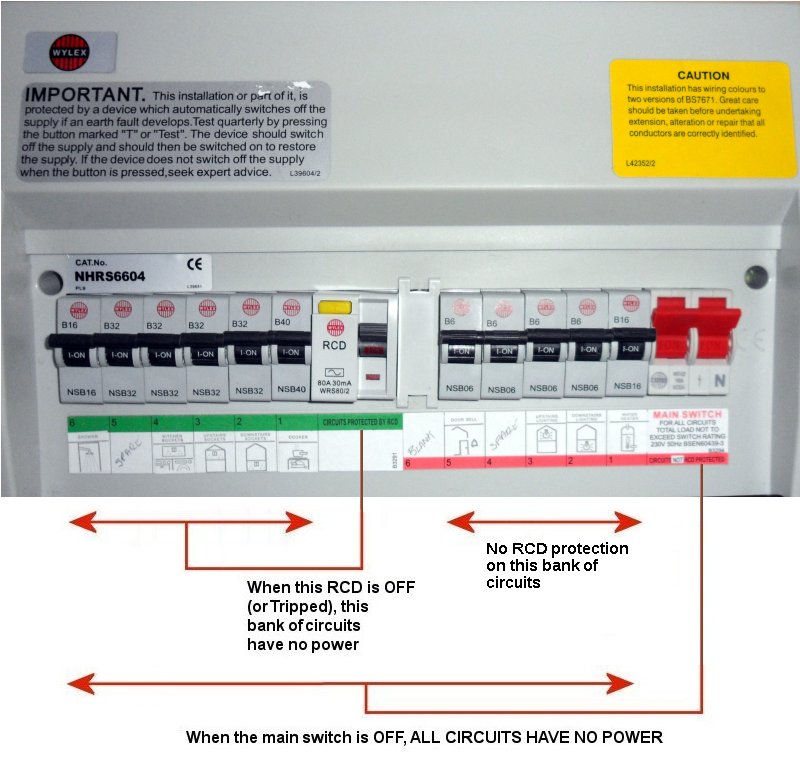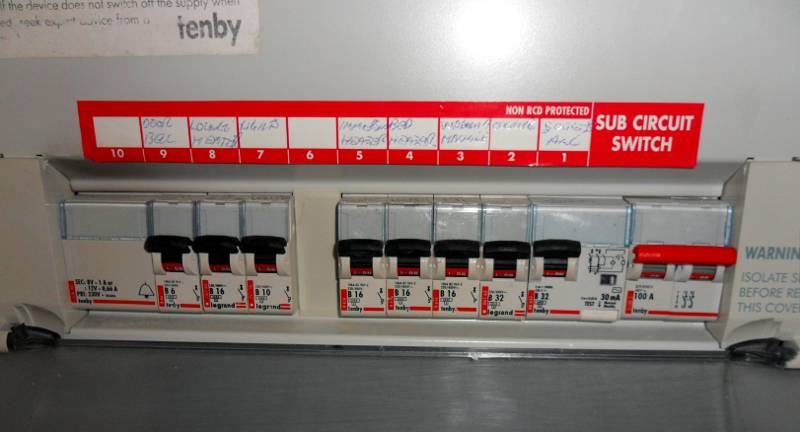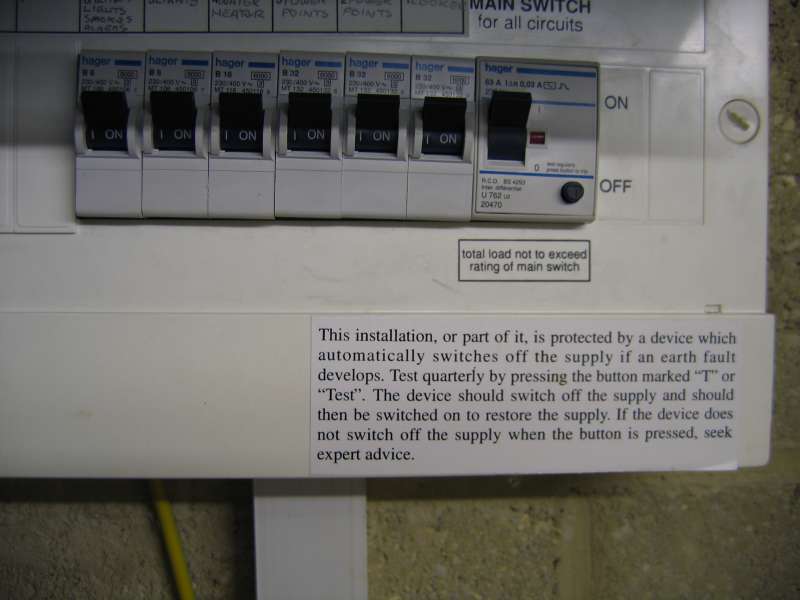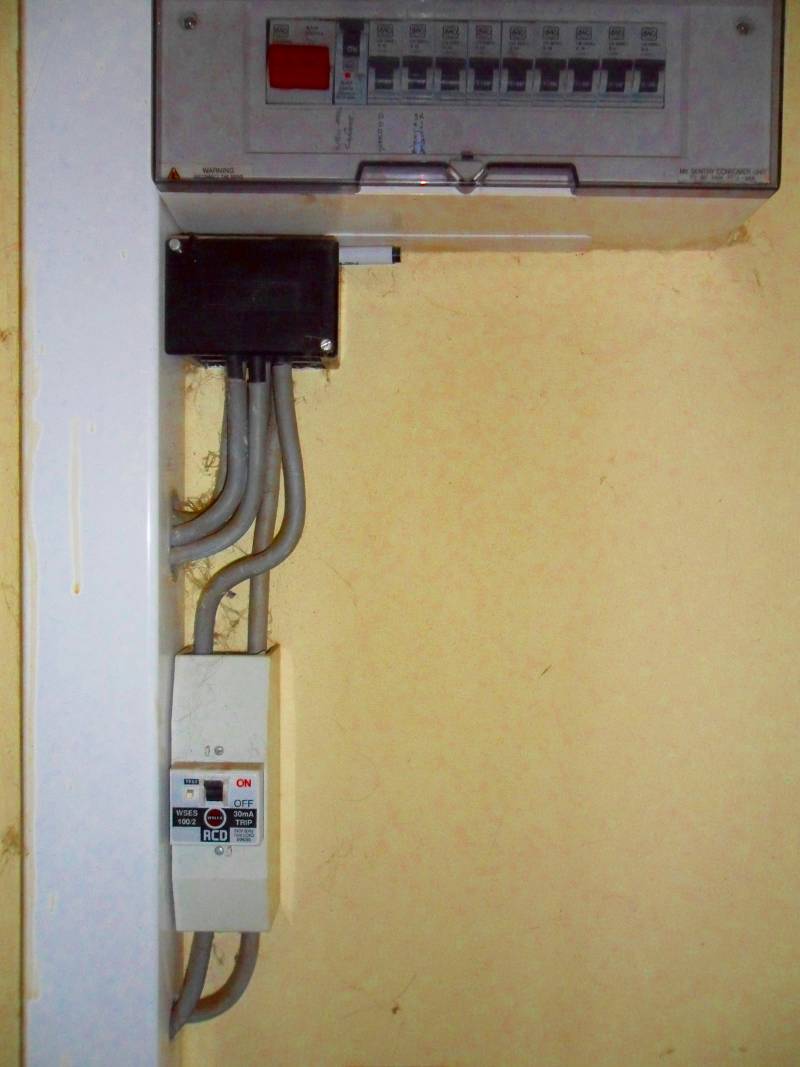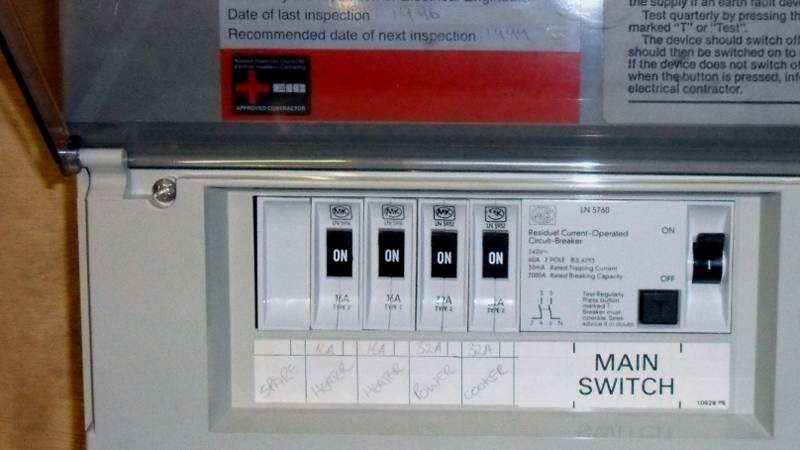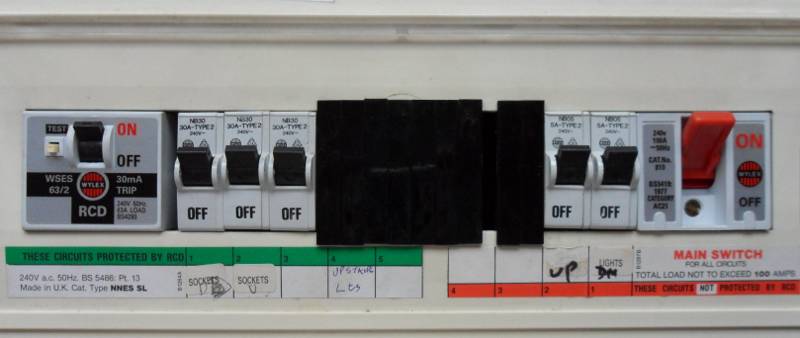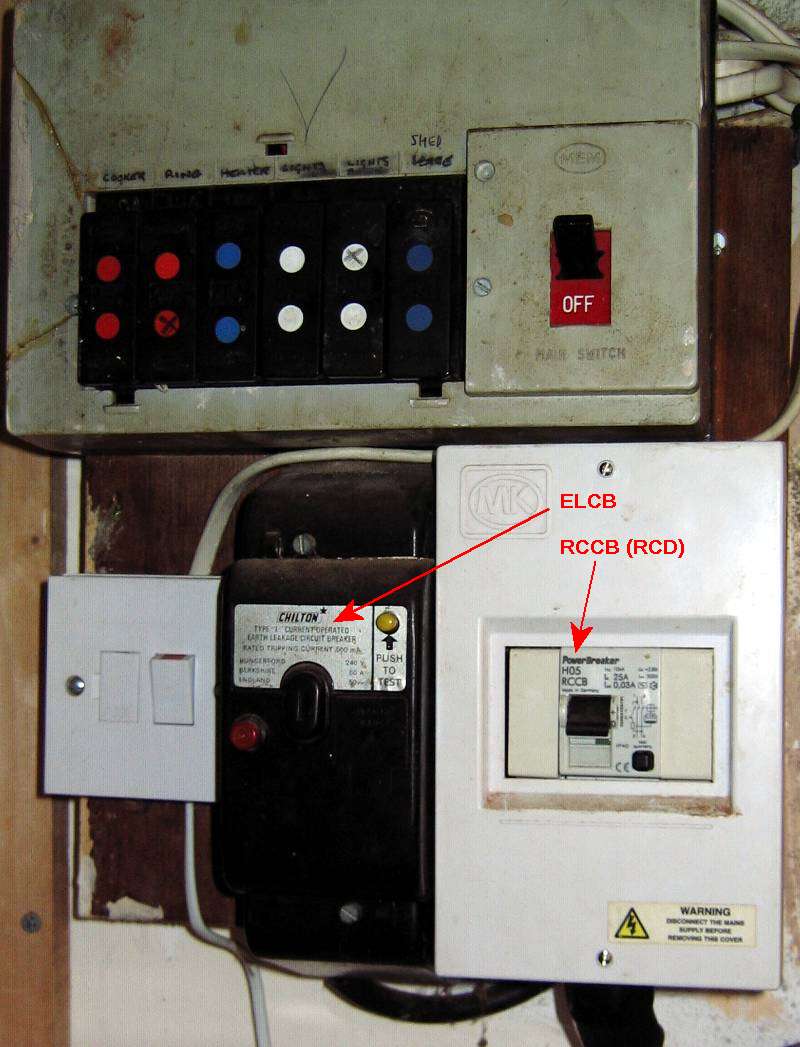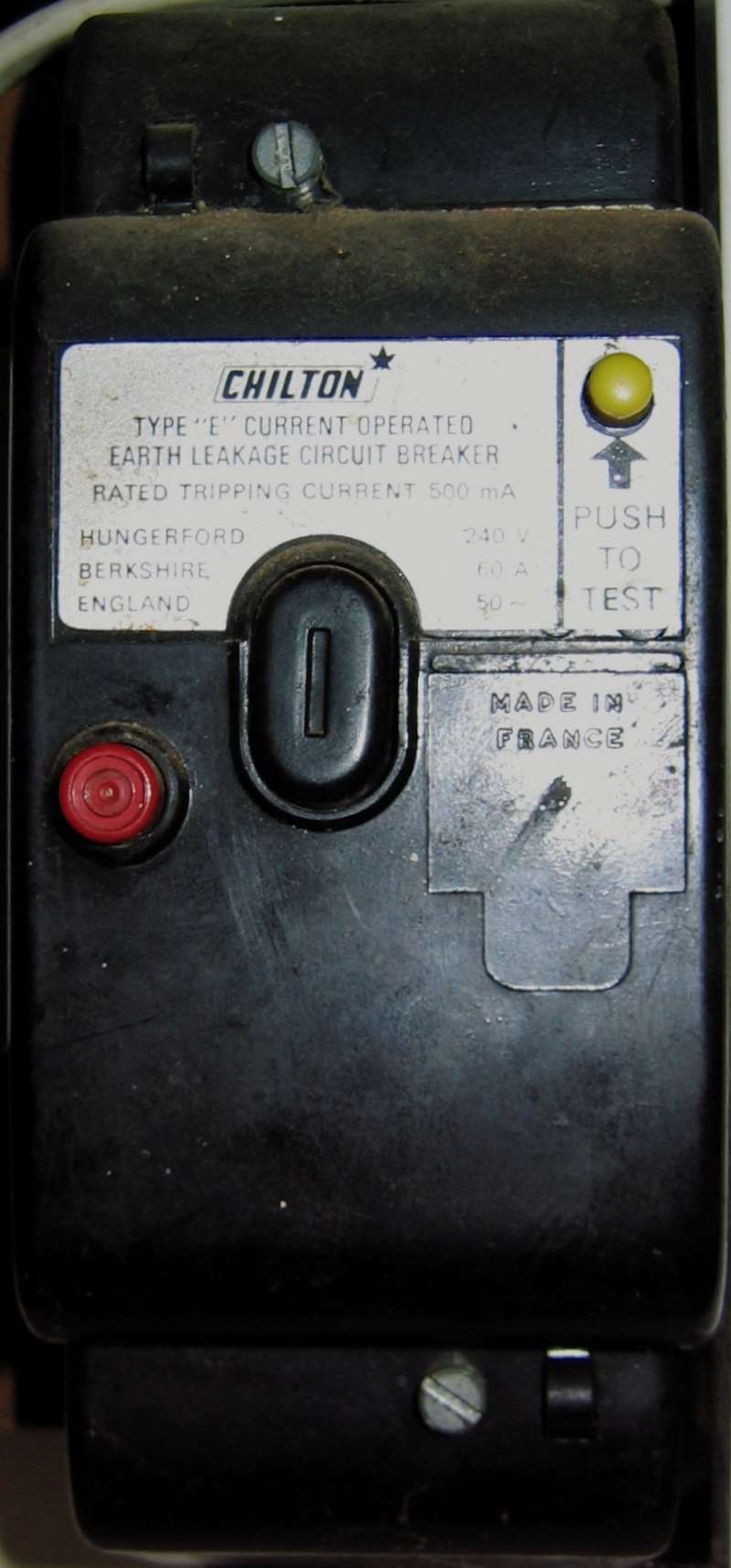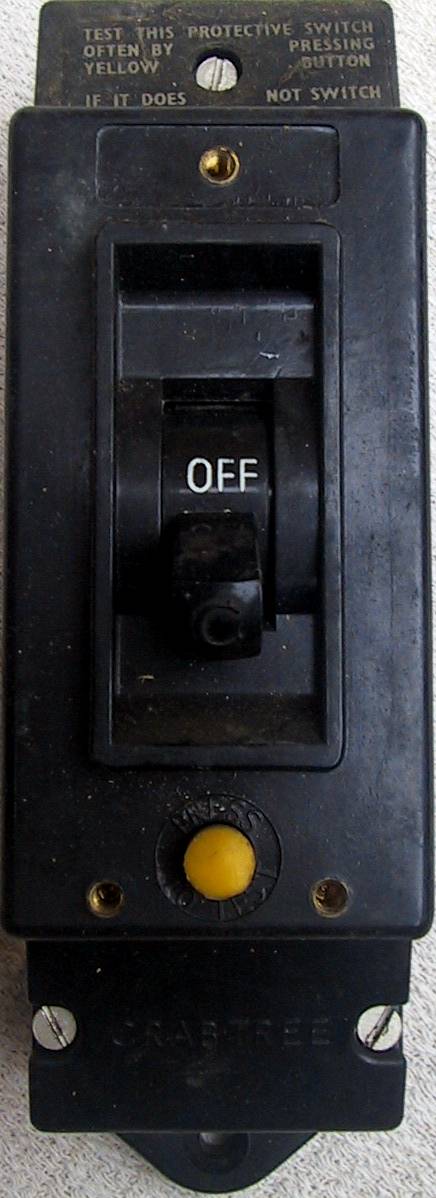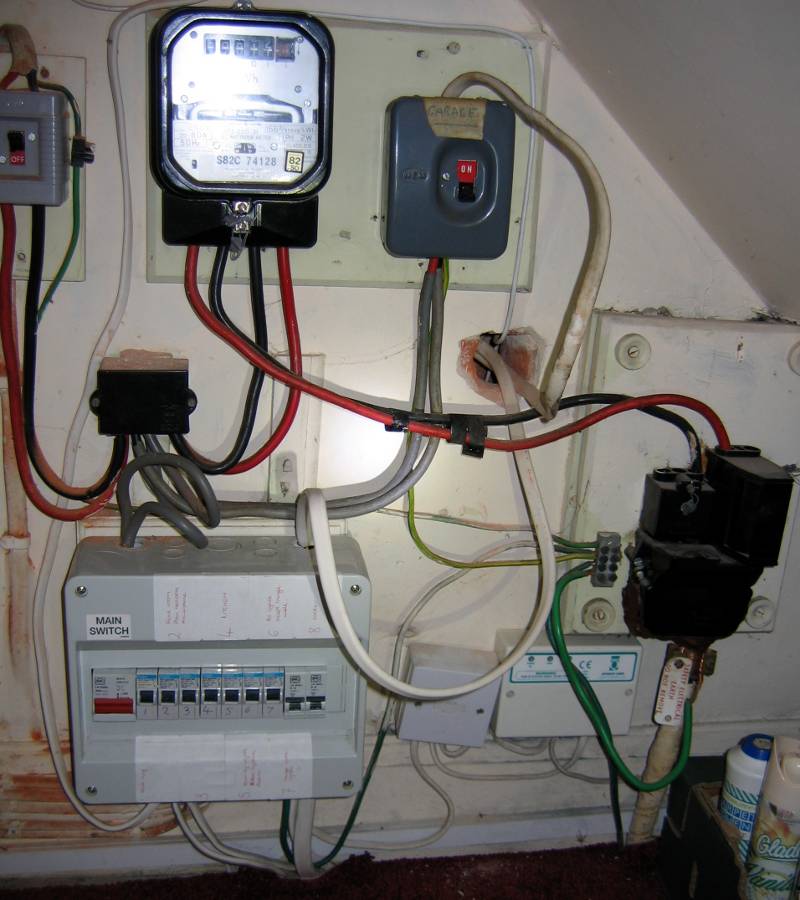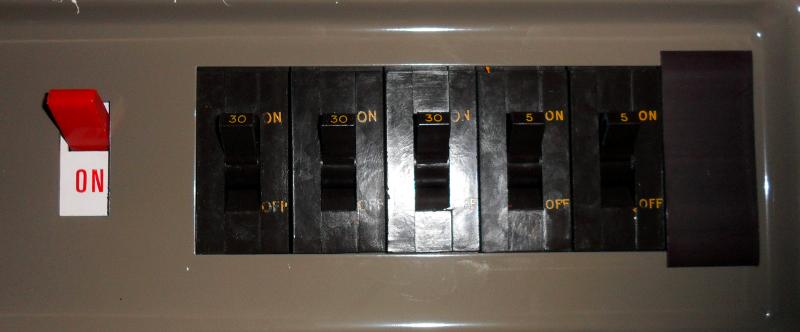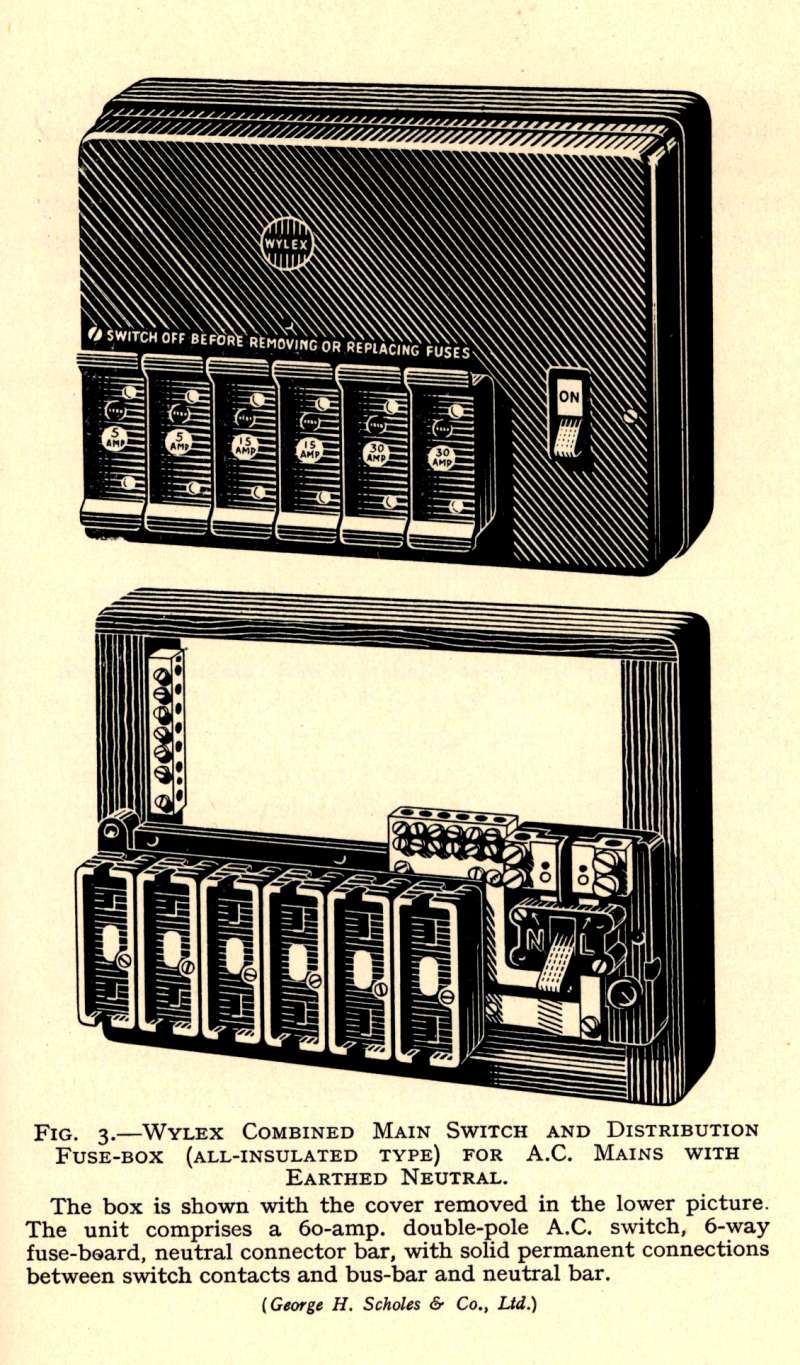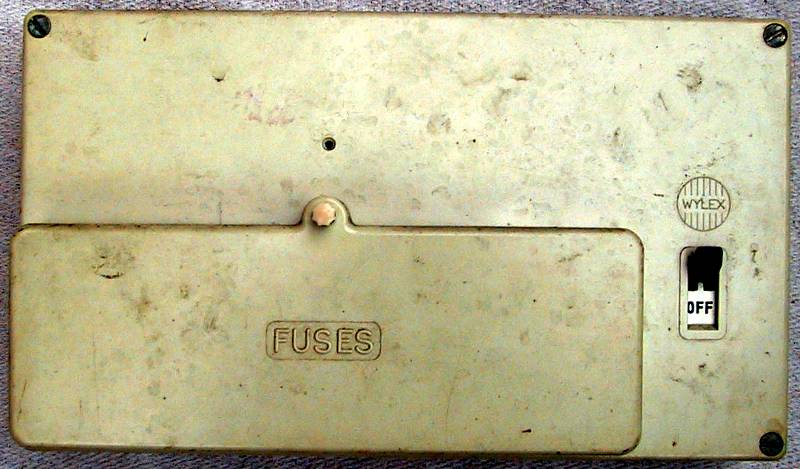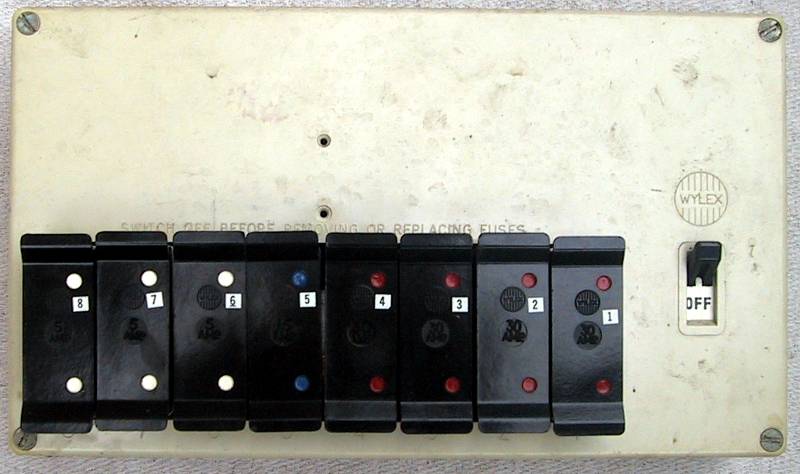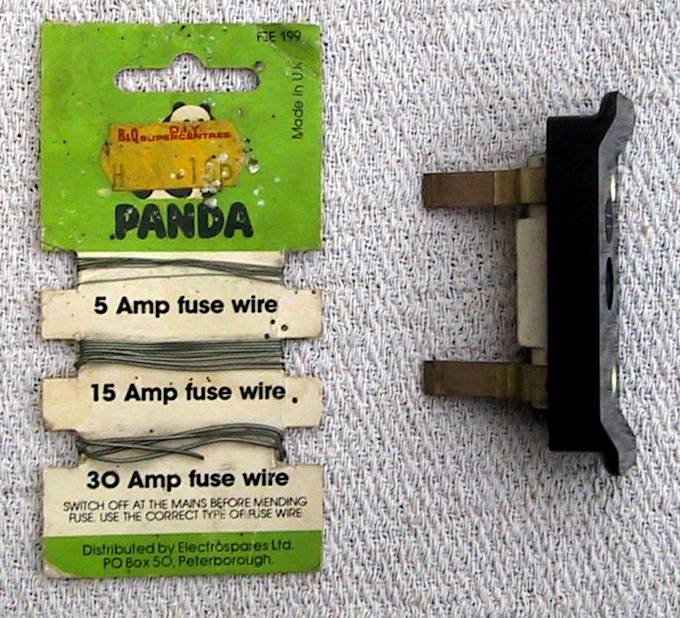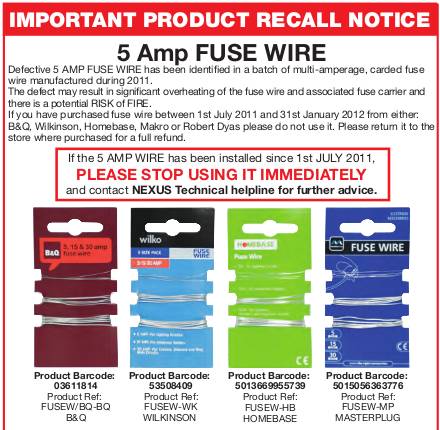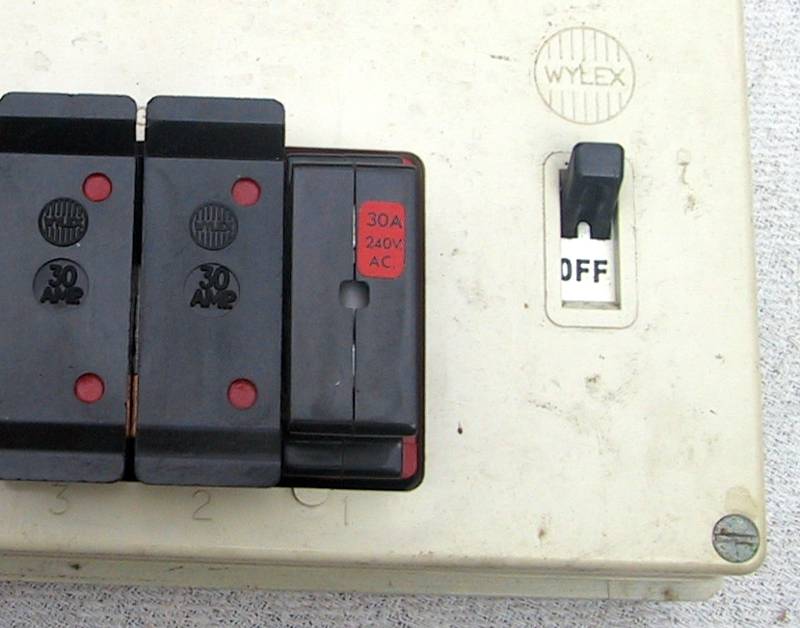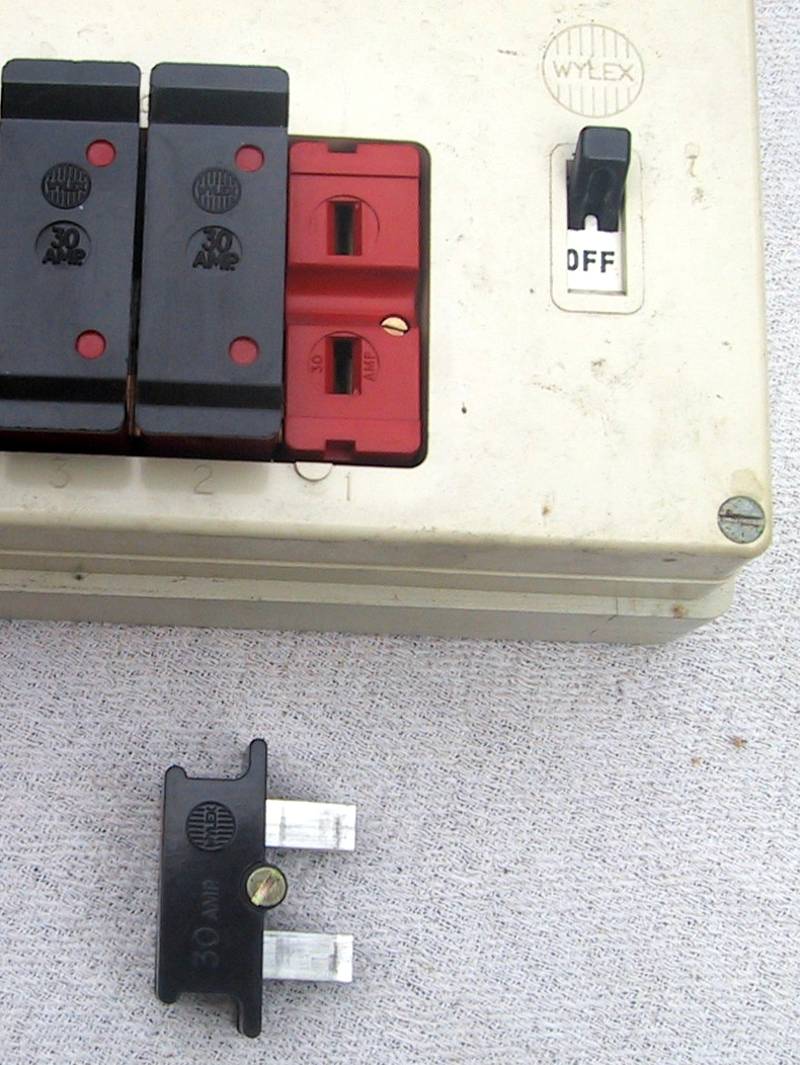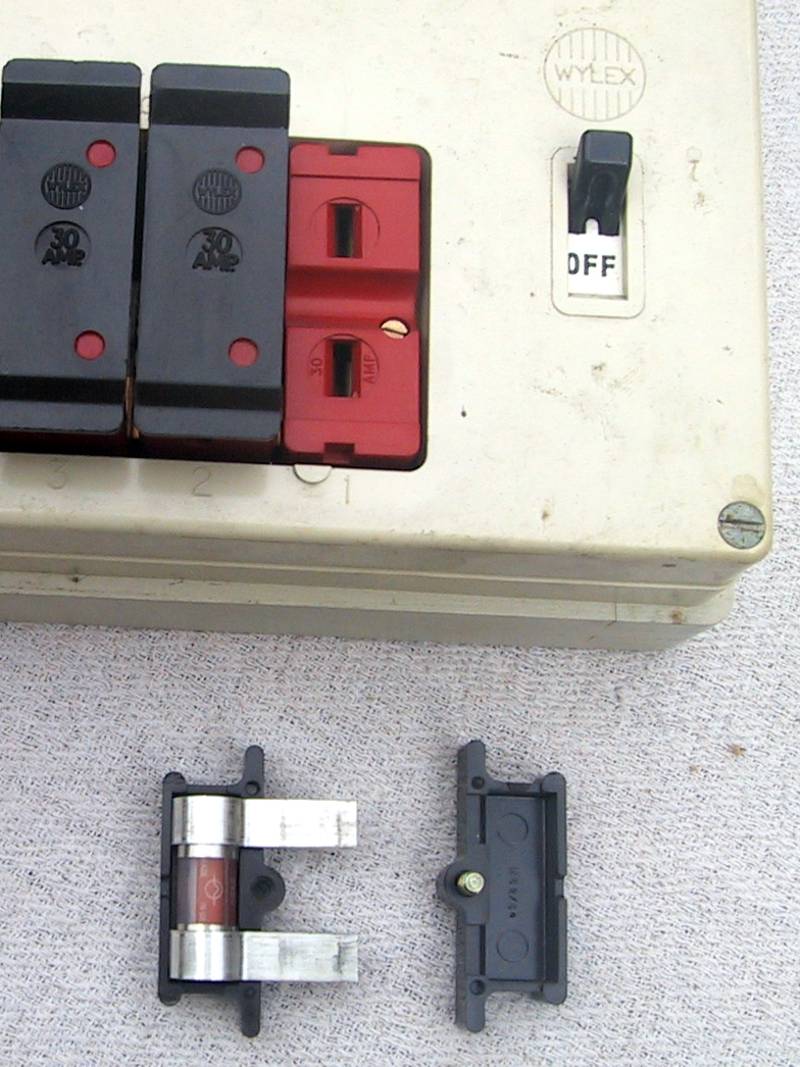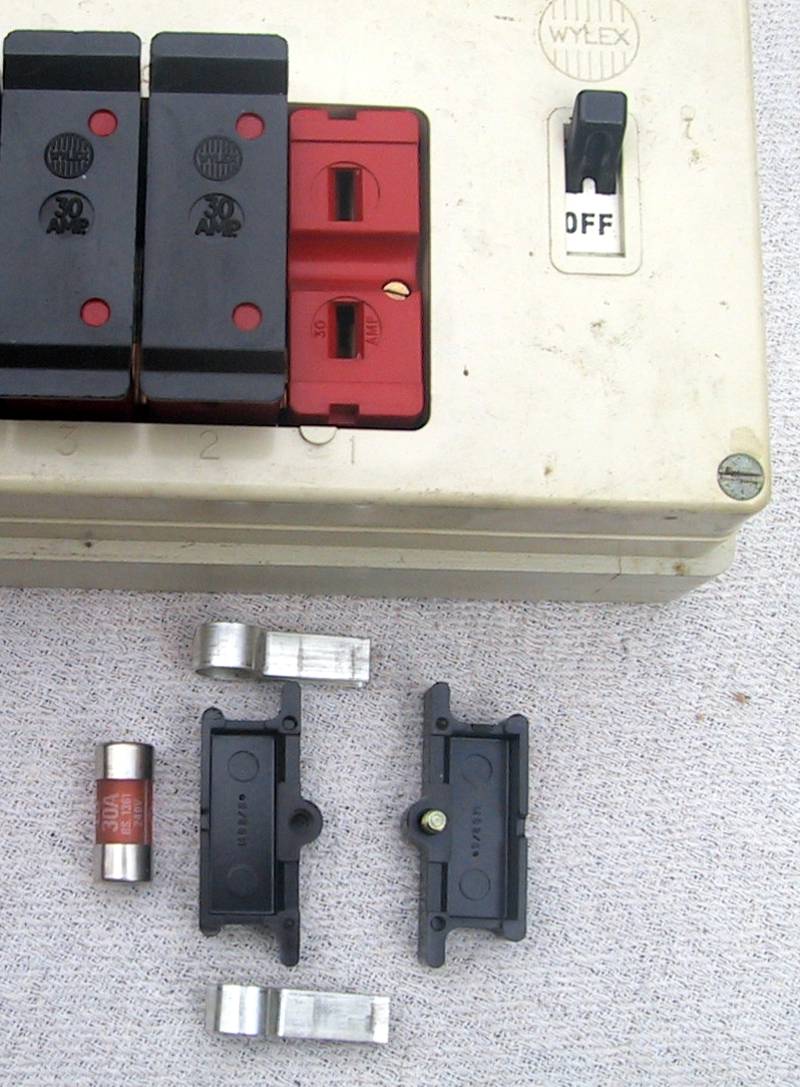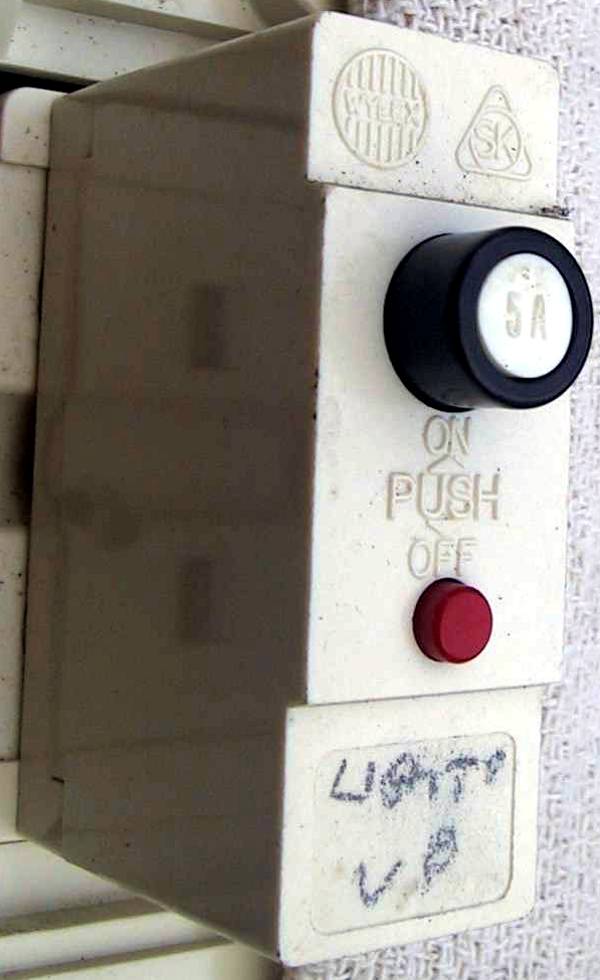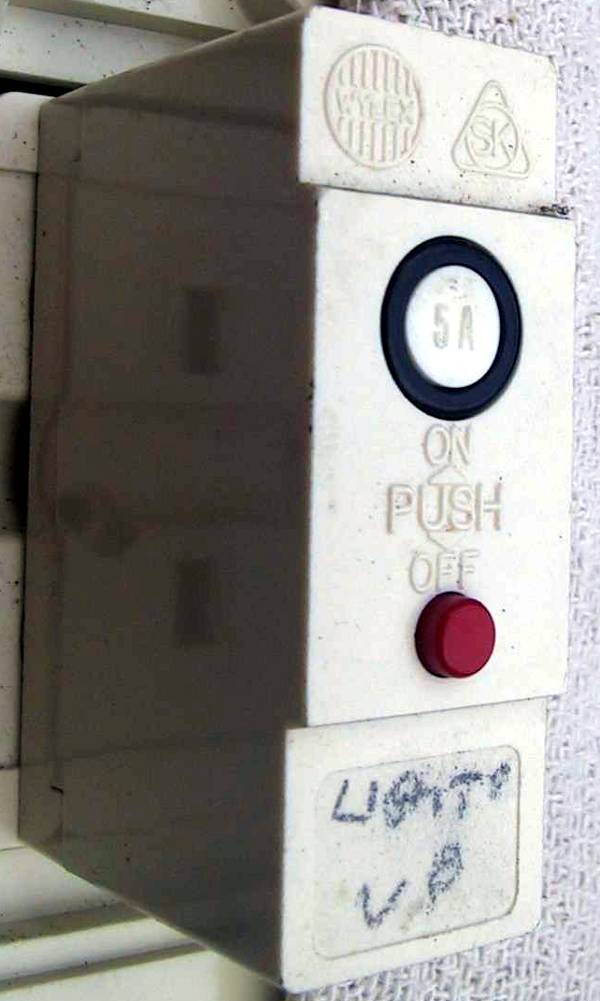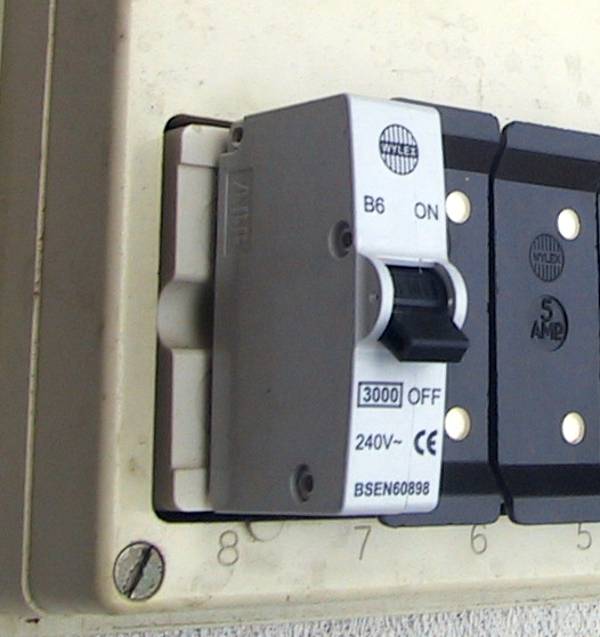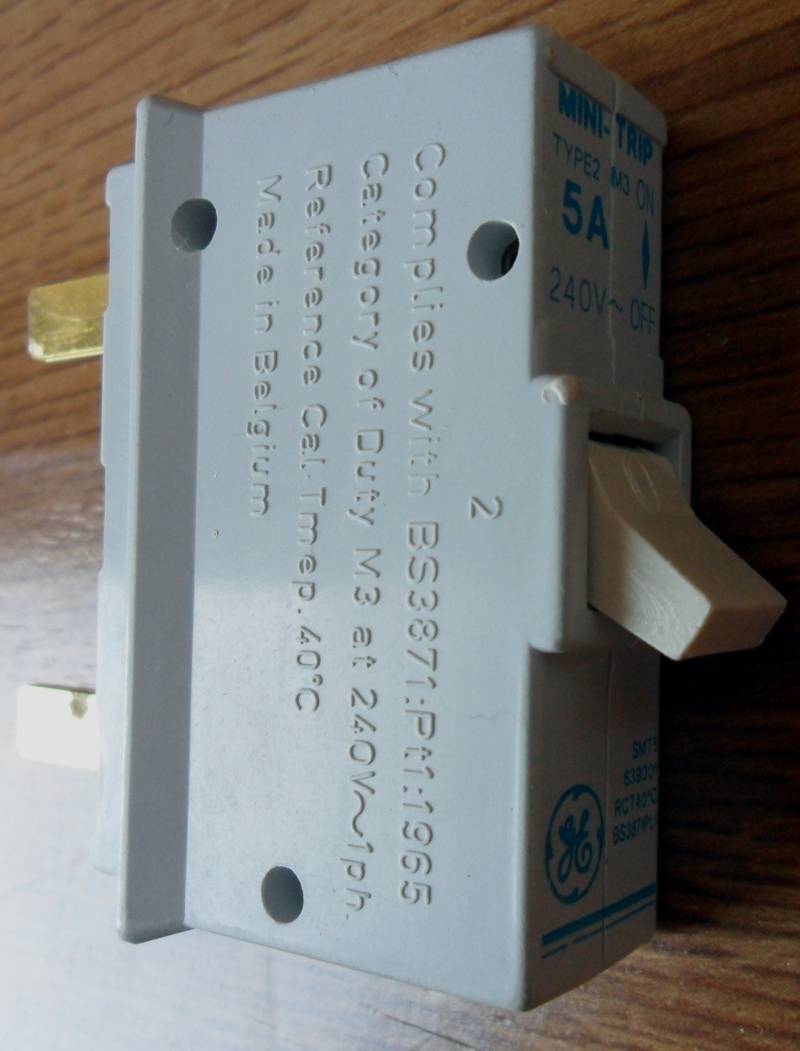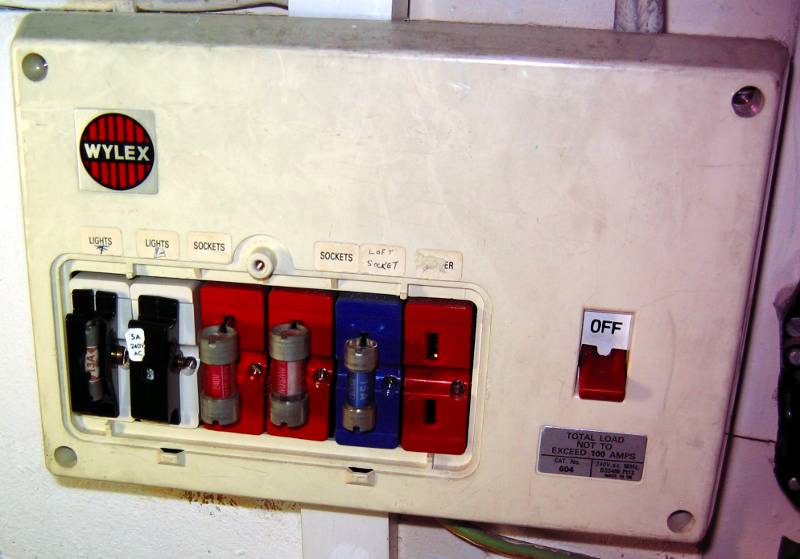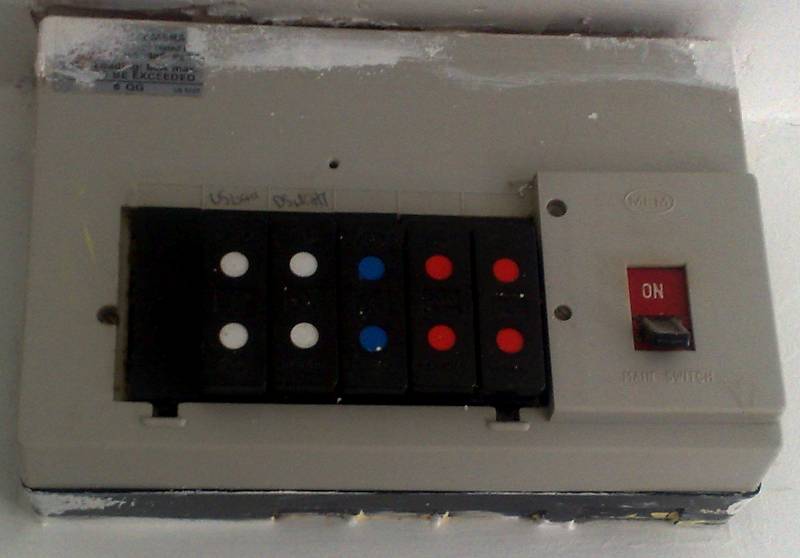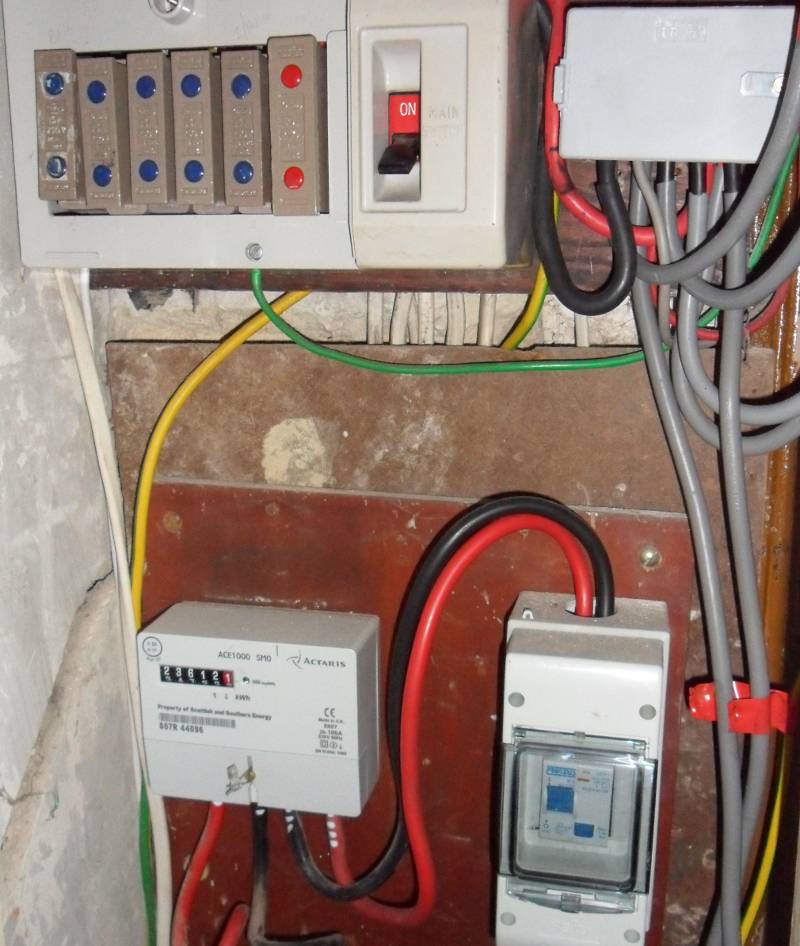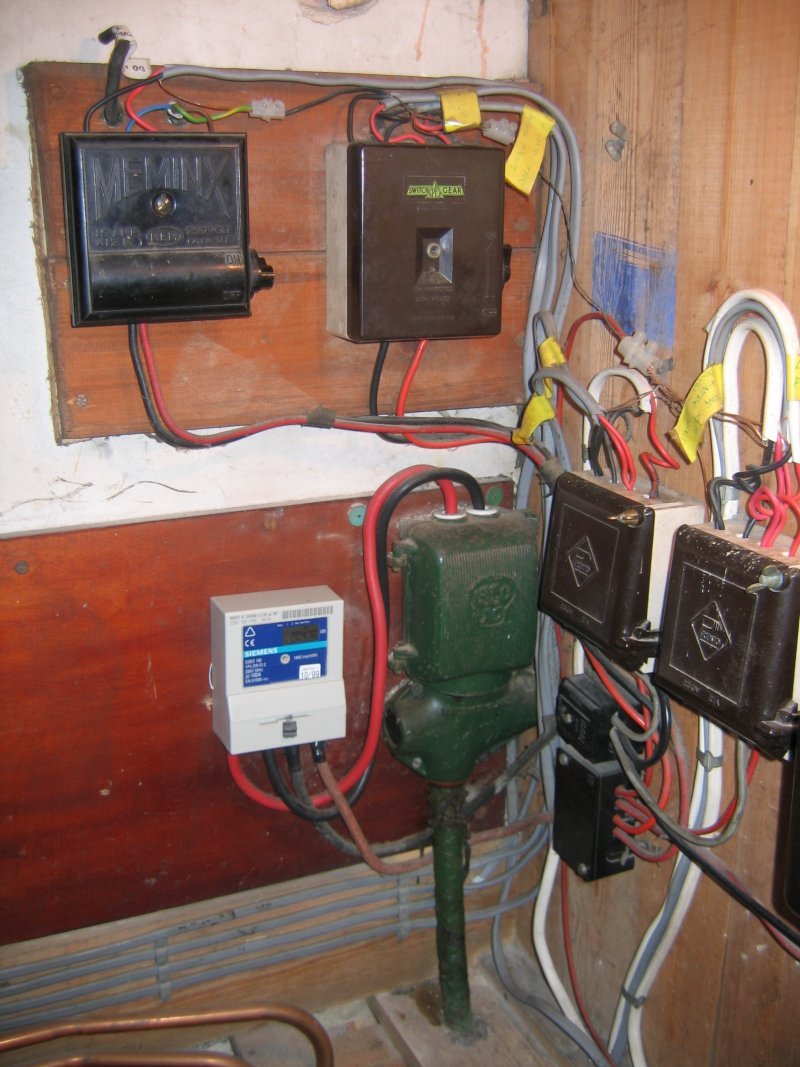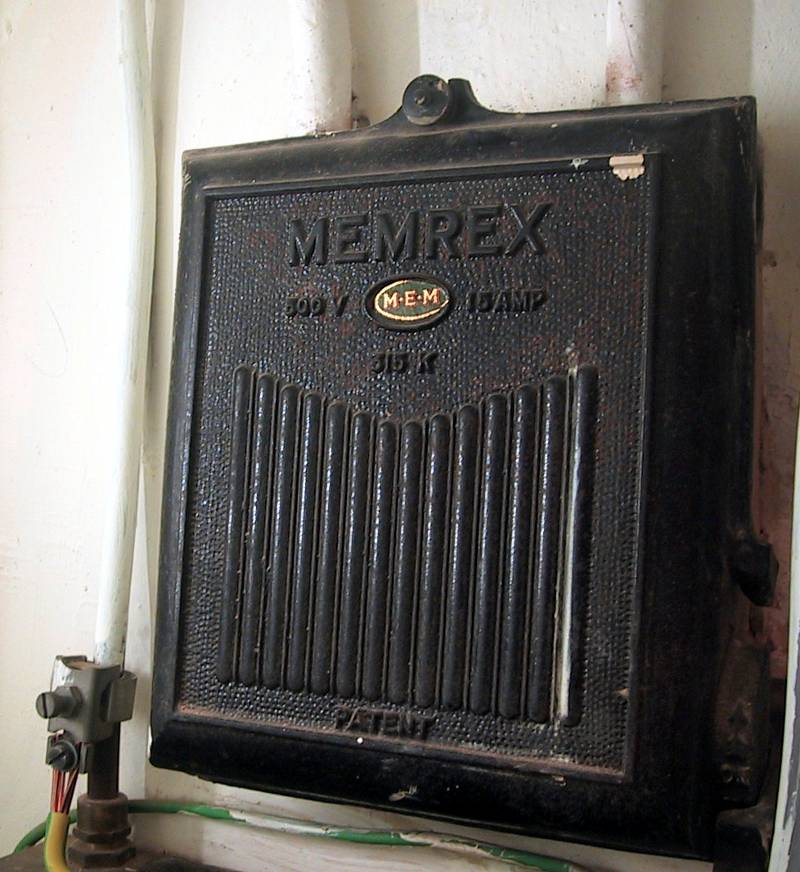
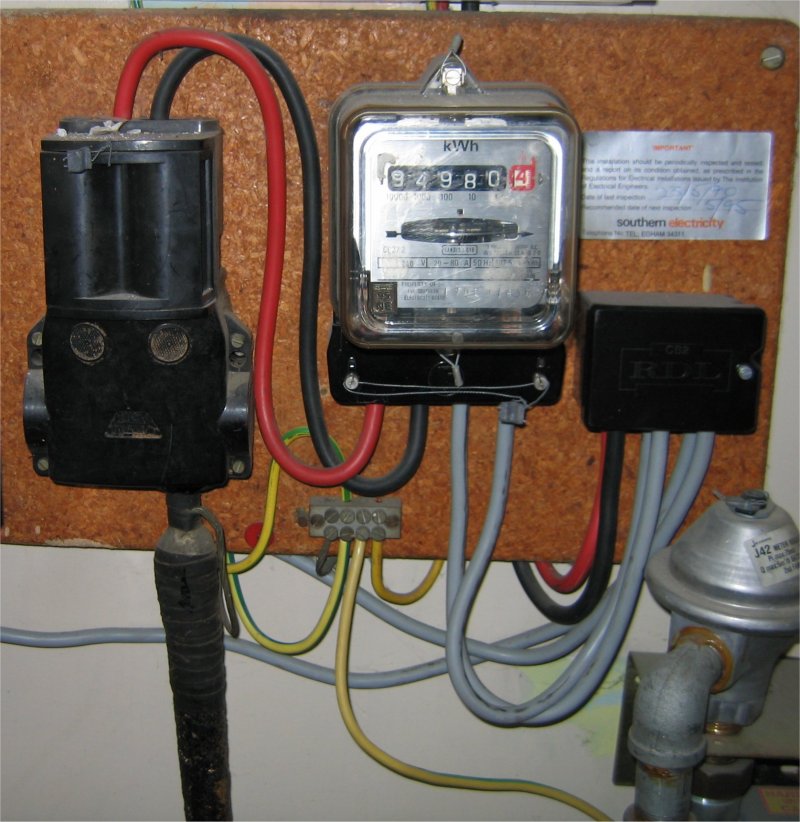



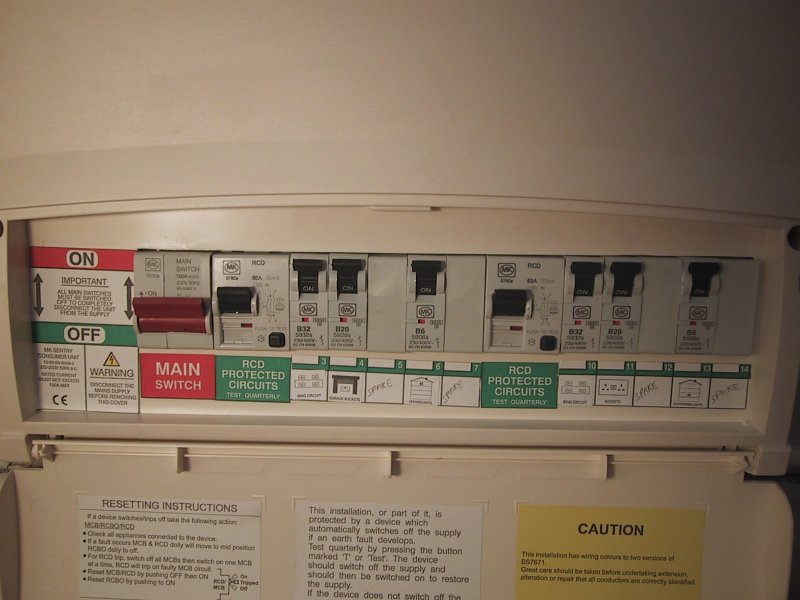
| Main Switch: | Turns everything OFF (if there is more than one consumer unit, there will be more than one main switch). |
| Circuit Breaker: |
A safety device that trips and disconnects power on overload or a short circuit on the relevant circuit. Think of it like the brakes on a car - it stops you before you hit real trouble. |
| RCD: |
A safety device that trips and disconnects power when there's a leakage of current to earth on any of the circuits it protects. Think of it like a seat belt in your car - it's not the same as the brakes, but it's an extra layer of protection. And just like a seat belt, sometimes when you pull it to put it on, it operates and jams and you need to feed it back and try again. RCDs are prone to "nuisance tripping" or tripping for no apparent reason. Usually it's cured by resetting the RCD, but if it happens too frequently (more than once every few months), it needs further investigation. |
| RCBO: |
A Residual Current Breaker with Overload Protection. In other words, it combines the functions of a Circuit Breaker and an RCD in one module. It could have tripped on overload or short circuit like a Circuit Breaker or earth leakage like an RCD. |
| FUSE: |
A piece of wire that breaks when a fault occurs. The fuse wire size is calculated to fail before the circuit cable it protects shows signs of stress. Unlike a modern circuit breaker, it can take a significant amount of time to disconnect the faulty circuit. Think of it like the brakes on a 1950s car - it will stop eventually, but you may be in the ditch by then. |
